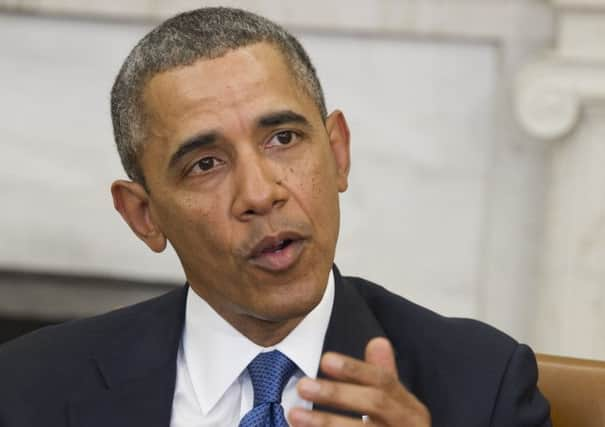Barack Obama budget focuses on jobs and education


Mr Obama’s plan is an indication that he is striving for unity among Democrats rather than compromise with Republicans.
But the president’s almost $4 trillion (£2.4tn) budget plan is likely to have a short shelf life.
Advertisement
Hide AdAdvertisement
Hide AdIt comes just three months after Congress and the White House agreed to a two-year, bipartisan budget pact that has already set the parameters for this election year’s budget work.
Democrats controlling the Senate have already announced they will not advance a budget this year and will instead skip ahead to the annual appropriations bills for 2015, relying on new spending “caps” set by December’s budget deal that provides $56 billion less than the amount Mr Obama wants in 2015. The president would divide the extra money equally between the Pentagon and domestic initiatives such as boosting manufacturing hubs, job training and pre-school programmes and cutting energy waste. Republicans are likely to balk at the idea, which would be paid for by curbing special interest tax breaks and making spending cuts elsewhere in the budget.
Mr Obama has also announced a four-year, $302bn plan to boost spending on roads, rail projects and mass transit. Half the initiative would be financed through corporate taxes.
Mr Obama’s budget arrives after a tumultuous year that began with him muscling through a ten-year $600bn-plus tax increase on upper-bracket earners. Feeling stung, Republicans refused to yield on about $80bn in automatic spending cuts that began in March.
Then, conservative Republican lawmakers forced a 16-day partial government shutdown over funding to implement the nation’s new health insurance program.
The small-bore, two-year budget deal emerged from the wreckage to alleviate the toughest automatic cuts.
With no design or expectation of luring Republicans into more budget negotiations in this election year, Mr Obama’s blueprint presents his vision for boosting job growth and favoured initiatives such as education. The White House announced earlier that the president was dropping a plan, opposed by most Democrats in his budget proposal a year ago, to slow cost of living increases for social security recipients.
The budget also will flesh out a plan Mr Obama announced in his State of the Union address to expand the earned income tax credit for childless workers, helping more than 13 million. It would also boost the tax credit for childcare and help people sign up for retirement accounts.
Advertisement
Hide AdAdvertisement
Hide AdRepublicans are sure to brush aside most of Mr Obama’s initiatives. Republican Paul Ryan, chairman of the house budget committee, released a report on Monday criticising many federal anti-poverty programmes, saying they should be redesigned to better help the poor escape poverty. It found that many poor people have little incentive to find work or work more because higher incomes mean lower benefits.
Mr Obama’s budget arrives as falling deficits have sapped much of Washington’s urgency for tackling the government’s fiscal problems.
The deficit fell to $680bn last year – still large but far smaller than the $1tn-plus deficits that plagued his first term.
The president’s austerity request for the Pentagon, including cuts to army personnel, the National Guard and the Littoral class of combat ship and a move to retire the Air Force’s A-10 attack aircraft, has provoked outrage from defence hawks. Republicans said the proposal “guts our defence”.
Mr Obama will recommend tax changes that would generate billions in revenues to help pay for those initiatives.
They include curtailing what the administration views as tax avoidance schemes by US companies with profits earned overseas and by foreign-owned companies with operations in America.